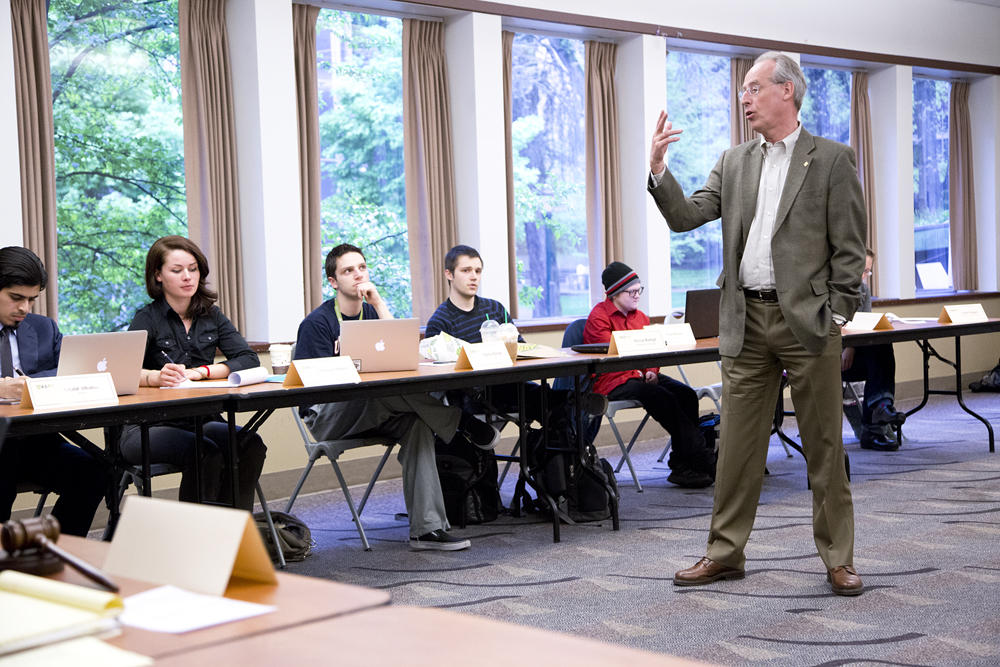The U.S. House of Representatives passed a bill Wednesday that would slash the interest rates on Stafford need-based student loans if the Senate approves the bill. The bill, House Resolution 5, would phase in over the next five years, eventually cutting interest rates by 50 percent.
Bill could cut student loan interest rates
The U.S. House of Representatives passed a bill Wednesday that would slash the interest rates on Stafford need-based student loans if the Senate approves the bill.
The bill, House Resolution 5, would phase in over the next five years, eventually cutting interest rates by 50 percent.
Senator Ted Kennedy (D-Massachusetts) campaigned in 2006 under the promise to cut student loan interest rates in half and expand the Pell Grant from a maximum of $4,050 to $5,100. Kennedy has called for HR 5 to be heard on the Senate floor next week, the next step in the process for the bill to become a law.
Lower- and middle-income students entering Portland State in fall 2007 would save $2,540 over the course of their loans, according to a report by the Oregon Student Public Interest Research Group (OSPIRG) and the Oregon Student Association (OSA). PSU students starting in fall 2011 would save an average of $4,920.
OSA Communications Director Courtney Sproule said that Oregon students would garner the second-highest savings in the nation under HR 5-and PSU students would see the second-highest savings in Oregon-because Oregon and PSU students are among the most debt-ridden in the nation.
“We’re dealing with a federal proposal, but it also sheds a lot of light on what’s happening on the state level in Oregon,” Sproule said. “We’ve seen the highest tuition hike in the nation-tuitions have skyrocketed and debt levels have too.”
The bill, part of the Democrats’ agenda for the first 100 hours of the 2007 Congressional session, was criticized by the Bush administration. A statement released by the Office of Management and Budget said, “…it is not clear that encouraging more loans is a wise course. Instead, the administration would support efforts to direct savings to additional grant support for low-income students.”
Democrats called the bill a “first step” and said more legislation to reduce student debt was on the way, including expansions of the Pell Grant.
“There was the desire this month to show the priorities of this new Congress, and one of the main priorities they’ve included is making college affordable,” said Luke Swarthout, associate director of U.S. PIRG’s Higher Education Project. Swarthout said that a Pell Grant expansion bill would likely enter Congress in February, in the budget and appropriations process that happens after the president releases his budget.
The average PSU student with subsidized Stafford loans leaves school with a debt load of $15,396.
“Seeing how much…I have accrued in debt [is] shocking,” said Durran Champie, a PSU student. “My mind has been preoccupied with the stress of knowing that when I’m done I’ll have a small mortgage to pay back.”
As the U.S. Congress considers the Stafford loan system and the Pell Grant, Governor Ted Kulongoski is preparing to pitch his college funding plan, the “Shared Responsibility Model,” to the Oregon Legislature. The Shared Responsibility plan would extend the Oregon Opportunity Grant to middle-class as well as lower-income students.
“We need to make sure that our Legislature are taking their cue from Congress and reinvesting in student education,” said Sproule.
The House vote on HR 5 comes a week after student advocacy groups rallied in Washington, D.C. for the national “Day of Action for College Affordability.”



